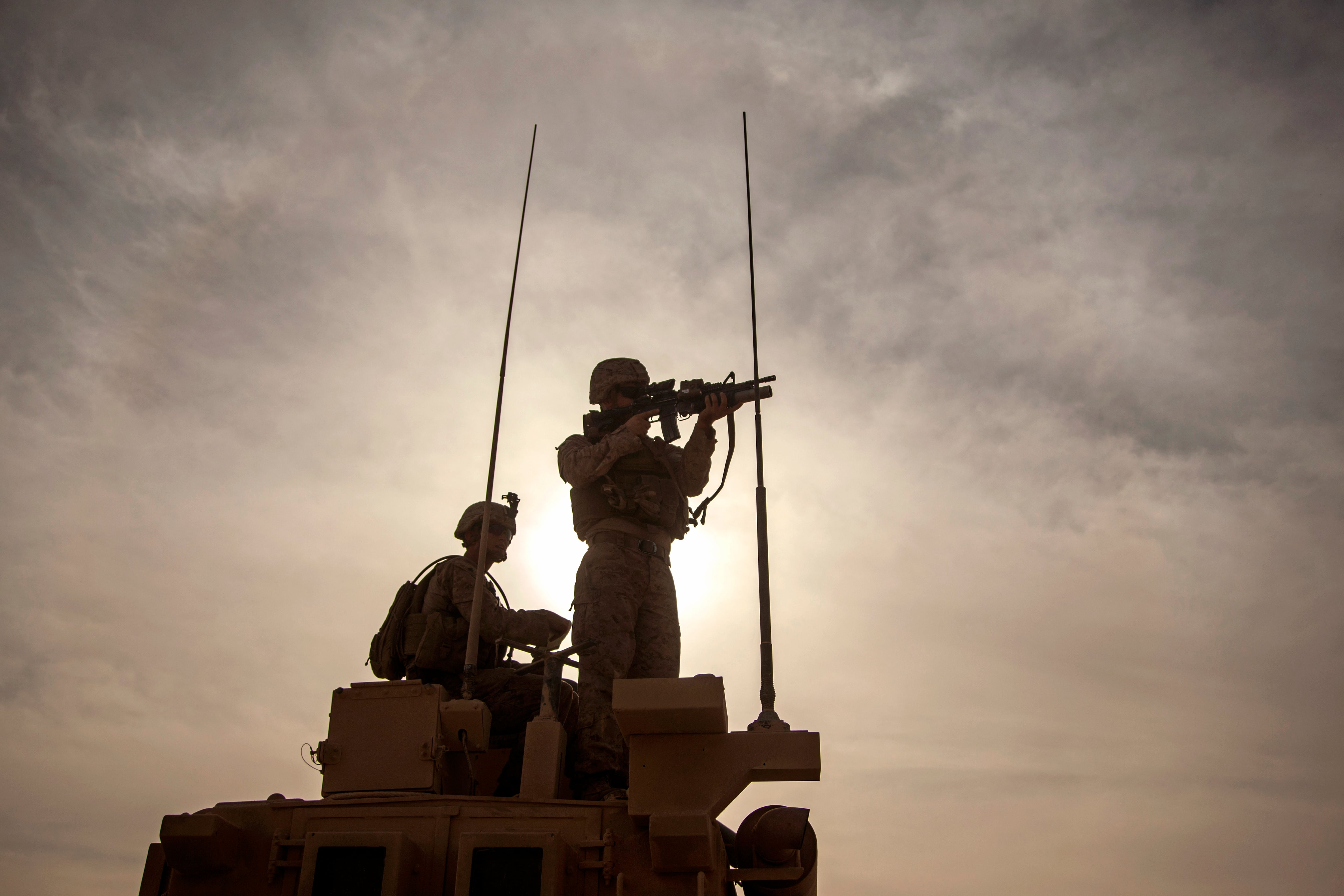The aircraft carrier Dwight D. Eisenhower and its carrier strike group crossed the Atlantic Ocean and entered the Mediterranean Sea over the weekend, the Navy confirmed Monday.
Ike left Norfolk, Virginia, on Oct. 14, and was initially believed to be heading into a deployment in the waters of U.S. European Command to replace the carrier Gerald R. Ford and its strike group as part of a scheduled deployment.
But the Oct. 7 attack on Israel by the Palestinian militant group Hamas, and fears that the conflict could engulf the region, has led to an extension of the Ford strike group’s deployment, and that carrier remains on station in the eastern Mediterranean off Israel.
The carrier and its strike group transited the Strait of Gibraltar on Saturday, according to the Navy.
After Ike left Norfolk, Defense Secretary Lloyd Austin announced on Oct. 21 that the carrier strike group would be heading to the Middle East, where a carrier has not operated in that U.S. Central Command area since the Afghanistan war ended in August 2021.
Austin has also directed additional Air Force fighter squadrons to the region and has put thousands of ground troops on high alert for a short-notice deployment if needed.
RELATED

The 26th Marine Expeditionary Unit, with the amphibious assault ship Bataan’s ready group, is also on station nearby.
The beefing up of naval forces there is happening not only to deter a potential escalation of the Israel-Hamas war by Iran and its other proxy forces in the region, but also to prevent further attacks against U.S. forces in Iraq and Syria.
As of Monday, the Pentagon has confirmed at least 23 drone attacks on U.S. bases in those two countries since Oct. 17, with at least 21 troops injured in the attacks.
Following the drone attacks, the U.S. on Thursday struck two sites in eastern Syria linked to Iran’s Revolutionary Guard Corps, which is known to collaborate with local militias.
“I think we’ve been crystal clear that we maintain the inherent right of defending our troops and we will take all necessary measures to protect our forces and our interests overseas,” Pentagon spokesman Air Force Brig. Gen. Patrick Ryder told reporters during a Pentagon briefing that day.
“We see a prospect for much more significant escalation against U.S. forces and personnel in the near term,” a senior defense official told reporters last week. “And let’s be clear about it: the road leads back to Iran. Iran funded, armed, equipped and trained militias and proxy forces all across the region.”
The destroyer Carney, operating in the Red Sea and deployed with the Ike strike group, shot down a barrage of drones and missiles believed to be fired at Israel on Oct. 19, munitions the Pentagon said were launched by Iranian-backed Houthi rebels in Yemen.
Eisenhower is joined on this deployment by the cruiser Philippine Sea, and the destroyers Gravely and Mason.
Air squadrons aboard for the cruise and comprising Carrier Strike Wing 3 include strike fighter squadrons 32, 83 and 131, as well as Carrier Airborne Early Warning Squadron 123, Electronic Attack Squadron 130, Helicopter Sea Combat Squadron 7, Helicopter Maritime Strike Squadron 74 and Fleet Logistics Support Squadron 40, according to the Navy.
Military Times’ Pentagon correspondent Meghann Meyers contributed reporting to this story.
Correction: An earlier version of this report misstated the strike group to which the destroyer Carney is assigned. Carney is assigned to the Dwight D. Eisenhower carrier strike group.
Geoff is the managing editor of Military Times, but he still loves writing stories. He covered Iraq and Afghanistan extensively and was a reporter at the Chicago Tribune. He welcomes any and all kinds of tips at geoffz@militarytimes.com.





